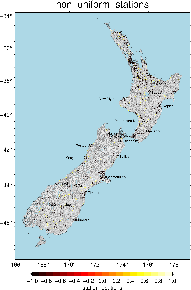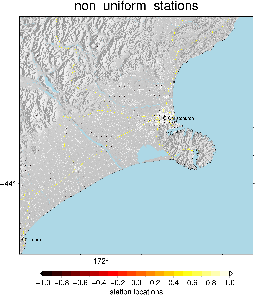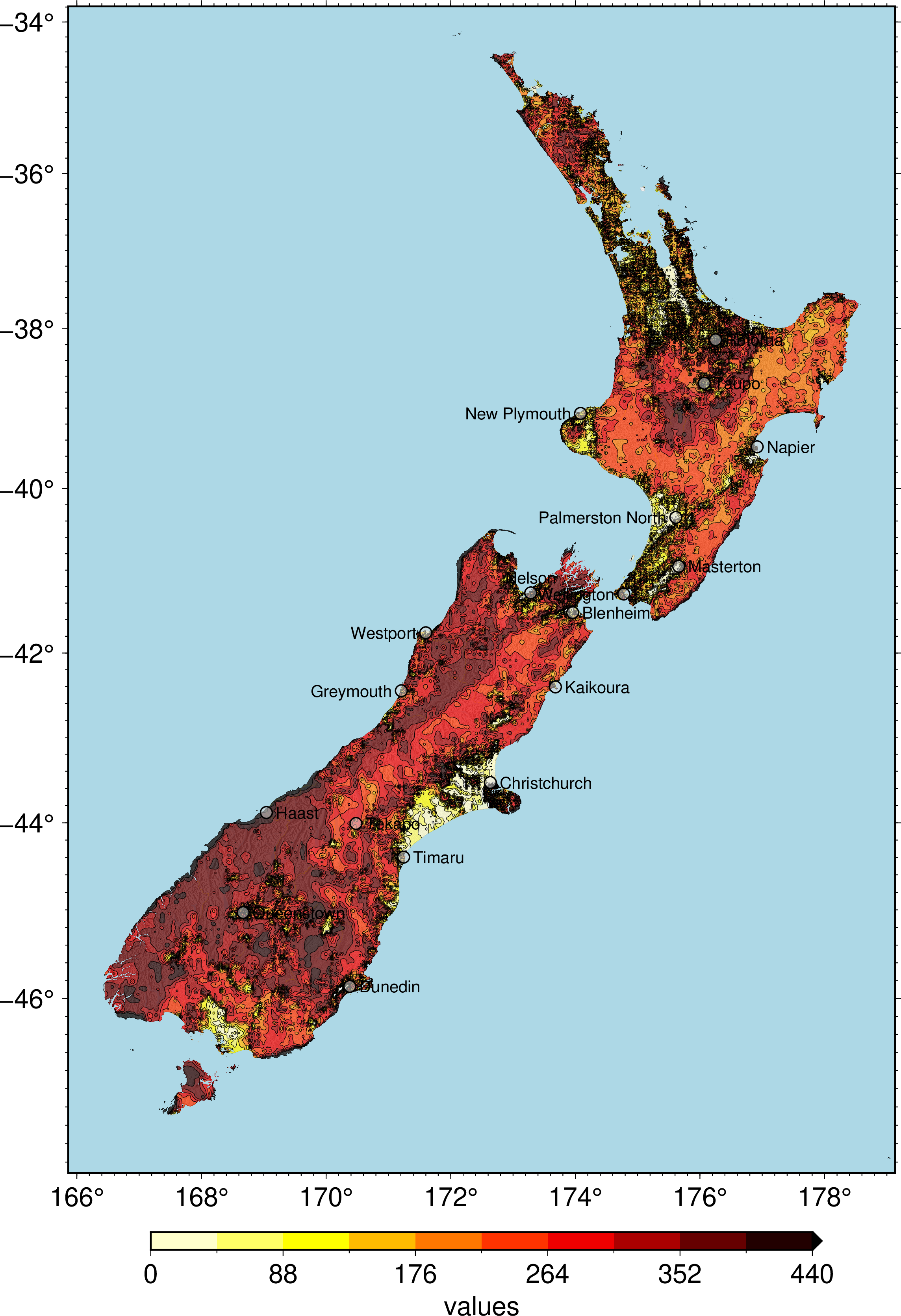Major changes:
- Made the minimum spacing actually what was specified rather than multiplying it by 5 - the minimum spacing then becomes 0.5km between points.
- Using vs30 delta (change in vs30 over the area) as a scoring criteria
- Fixing the bug that meant vs30 scored 100% all of the time
- The only version generated was the on-land version - gmt select -F/nesi/projects/nesi00213/PlottingData/Paths/lds-nz-coastlines-and-islands/150k.gmt input > output
- Note make sure the first station name is ascii so it doesn't replace anything unnecessarily
Currently using:
This version only generated a 400 m grid as we envision we will not need a finer non-uniform grid.
overall_score = vs30_delta_score * 0.5 + population_score * 0.5
The thresholds used are:
thresholds = [0.3, 0.5, 0.5, 0.5]
# 4km, 2km, 1km, 0.5
vs30_delta: 0 for vs30_delta < 0; 1 for vs30_delta < 600; and linear in between
(absolute values left, scoring right)
population_score was preserved from the last version: 0 for population less than 10; 1 for greater than 30 and linear in between
There were population points added to the Christchurch and Wellington CBD to increase the population score in these areas - there has been a note for subsequent versions to use commercial capacity too.
For vs30 delta and population there is a search grid to see the values on their respective input grid. Vs30 delta scans the area represented by it's point and determines the maximum difference between any two points. Population scans the area base and finds the max value.
All real stations used in the validation workflow are added to this version to make subsequent versions of Cybershake Simulation / Empirical as compatible as we can.
Thoughts for next version:
- Reduced score for points above a certain latitude (Auckland) - or perhaps z-factor?
- Points within the Wellington and Christchurch CBD to split automatically – Add in a commercial population too
- Selection of real stations
- The population scoring in it's current from is essentially scored on meshblock density rather than population as such. The population-distance metric explored creates an explosion of points and a saturation in major cities - the value to score metric should be improved here.






